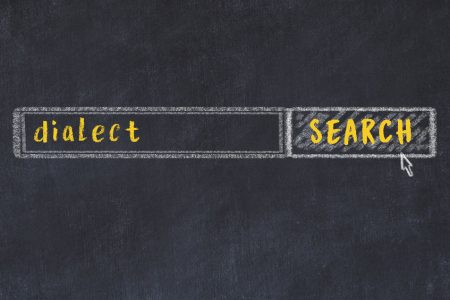
Translating into the Right Version of the Destination Language
by Chad Richardson
When you get translation services from one language into another, you need to be sure that you’re working with a good translator. The person who does the translation needs to be fluent in both, the source and the destination language. In addition, they need to speak the right version of the source and destination language.
Different Versions of the Same Language
If your document has to be translated into Brazilian Portuguese, then the translator should be familiar with that kind of Portuguese, as opposed to the Portuguese spoken into Portugal. Of course, there might be more similarities rather than differences between these two types of Portuguese, but if you use the wrong kind, then the people reading the document or advertisement are likely to note it. In other words, the differences may seem minor to someone who doesn’t speak either of the two versions of Portuguese, but they will stand out a great deal to someone who does.
Different Types of English in the World
One can understand the difference between two versions of the same language by considering the various kinds of English spoken throughout the world today. Although American English, British English, Australian English and Indian English might all be various forms of English, they contain differences that are quite obvious to the people who speak them.
English in the US vs. English in the UK
Americans say “aluminum” while Britishers say “aluminium,” with an extra “i”; the words are pronounced differently as well. So if you were to place a large advertisement in an American city with the word “aluminium” in it (with an “i”), it would stand out like a sore thumb. The same goes for “aluminum” without the “i” in the UK.
There are many little differences like this between different types of English e.g. many words which end in “or” in American English end in “our” in British English. This applies to “color,” “honor,” “neighbor” etc. The British say “trainers” where Americans say “sneakers” and the British say “jumpers” where Americans say “sweaters.”
Translating into the Right Version of the Destination Language
The differences between two versions of the same language are many, as anyone who has had the time to study the two will know. This is why it’s necessary for a translator to be clear about the version of the destination language that they are translating into and to be familiar with it.
Contact us for accurate translations into whichever version of the destination language you need.
Related Articles
AI-Powered LQA and Human Review: The Smartest Way to Scale Localization
Every multilingual project begins with ambition: the ambition to connect, to scale, and to meet global audiences where they are. But ambition often collides with the reality of manual language review processes that strain valuable resources. This friction delays launches and diminishes the agility brands need to thrive internationally. The answer is not replacing people…
Connecting Through Language: Why Global Brands Are Investing in Multilingual Video
In today’s digital world, attention is the most valuable currency—and it’s increasingly multilingual. For brands expanding across borders, creating content that resonates globally isn’t just a competitive advantage; it’s a business necessity. Whether you’re onboarding a workforce, educating customers, or entertaining the masses, your audience expects more than a translated script. They expect localized video…
The Formula for AI-Powered Automation: A Scalable Approach for Any Business
Automation is not just about implementing new tools—it’s about creating a culture of innovation and efficiency. The most successful companies don’t just adopt technology; they build cross-functional teams of problem-solvers who thrive on optimizing workflows, streamlining operations, and driving digital transformation. At Keylingo, we’ve spent years refining AI-powered automation strategies, testing tools, and improving processes.…
here
for you
We’d love to learn more about your translation and localization needs.